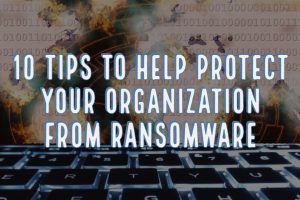
While the Health Insurance Portability and Accountability Act (HIPAA) is all about protecting patient privacy, the Privacy Rule is just one of five areas of regulation. When it comes to annual requirements, the other heavy hitter is the Security Rule, which focuses on securing technology. This blog explores the key aspects of the HIPAA Security Rule and its implications for covered entities and business associates.
Understanding HIPAA Security Rule Applicability
The Security Rule applies to various entities involved in healthcare transactions, including:
- Covered Healthcare Providers: Those providing medical or health services and transmitting health information electronically.
- Health Plans: Individual or group plans covering medical care costs, including health insurance issuers and government programs like Medicare and Medicaid.
- Healthcare Clearinghouses: Entities processing healthcare transactions from standard to non-standard formats.
- Business Associates: Individuals or entities performing functions or activities involving the use or disclosure of ePHI on behalf of a covered entity.
Security Rule Goals and Objectives
The Security Rule outlines specific goals and objectives to ensure the protection of ePHI. Regulated entities must:
- Ensure the confidentiality, integrity, and availability of all ePHI.
- Protect against reasonably anticipated threats and hazards to ePHI security.
- Safeguard against uses or disclosures not permitted by the Privacy Rule.
- Ensure compliance with the Security Rule by their workforce.
- Covered entities are obligated to obtain written agreements from business associates regarding the protection of Protected Health Information (PHI). Flexibility in approach allows customization based on organizational size, complexity, and technical capabilities.
Security Rule Organization
The Security Rule is organized into six main sections, each addressing different aspects of security:
- Security Standards: General Rules: Establishes general requirements, flexibility of approach, and decisions on addressable implementation specifications.
- Administrative Safeguards: Manages the selection, development, and implementation of security measures.
- Physical Safeguards: Ensures protection against natural and environmental hazards and unauthorized intrusion.
- Technical Safeguards: Governs technology, policies, and procedures for protecting ePHI and controlling access.
- Organizational Requirements: Includes standards for business associate contracts and arrangements.
- Policies and Procedures and Documentation Requirements: Mandates the implementation of policies, documentation, and retention requirements.
Implementing Security Rule Standards
Regulated entities must comply with all Security Rule standards, including working towards recommendations throughout the year. Recommendations can be either required or addressable, with the latter requiring a reasonable and appropriate safeguard assessment.
In conclusion, the HIPAA Security Rule provides a robust framework for safeguarding ePHI. Covered entities and business associates must navigate its intricacies to ensure compliance, adaptability, and, most importantly, the secure handling of electronic health information.




Leave a Reply